About opals
How are the opals formed and how do you know the difference between different opals.
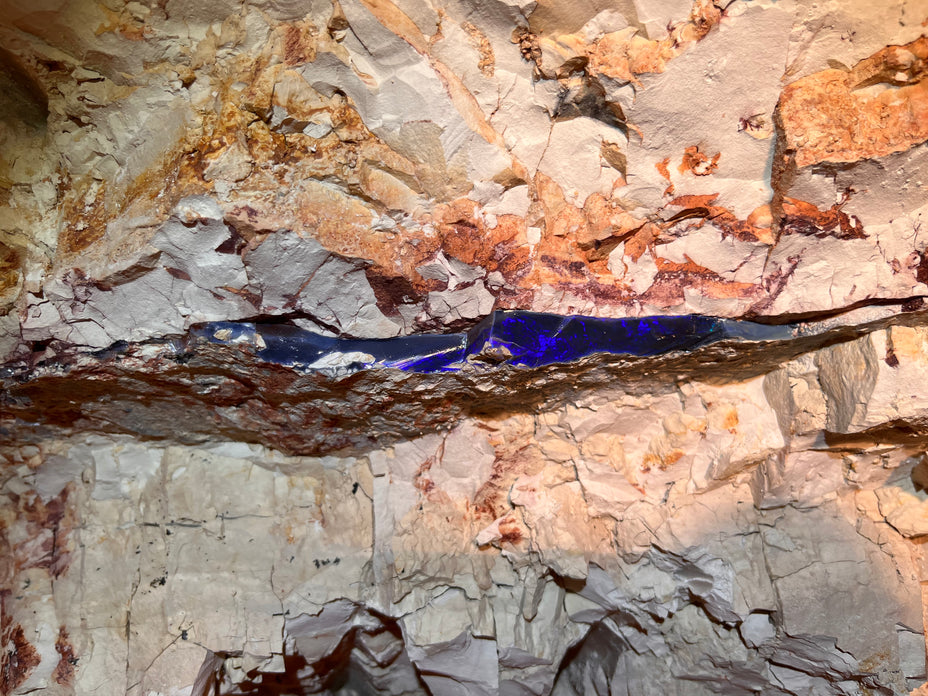
How are they formed?
Opal was formed 20-100 million years ago when there was a large inland sea in Australia. Without going into too much detail, opal is formed from a solution of silica and water. Water has run down through the earth and absorbed silica from sandstone. This silica-rich solution has deposited itself in cracks and cavities caused by natural faults or the decomposition of fossils. As the water has disappeared, it leaves behind a silica deposit. This cycle repeats over very long periods of time, and eventually opal is formed. A solid opal has a 6-12% water content. Some of the cavities have been plant material or animal bones. This is why we can sometimes find opalized bones, teeth and shells from prehistoric times. If you look at an opal through a microscope, there are small ridges in the opal. It is the height difference and the distance between the ridges that give the different colors when the light is refracted. You can compare it to making facets on diamonds to create a play of colors. The opal just has it from nature.
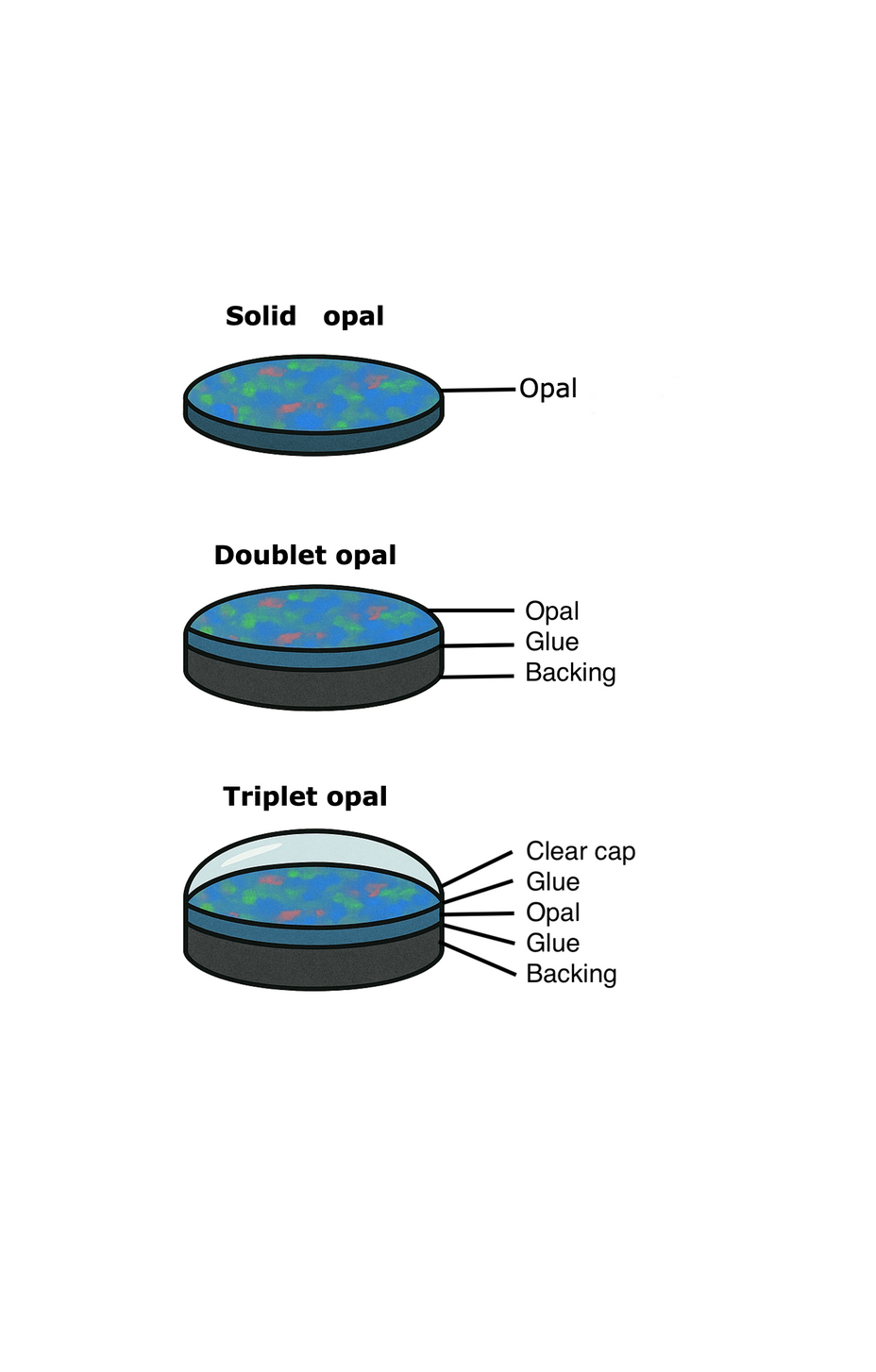
The difference between solid and composite opals
Solid opal - are opals that are cut and polished from raw opals directly from the ground. The raw opal is not treated in any way other than being cut and polished. There are several different varieties of solid opals. A solid opal is approximately 6.5 on the Mohs scale. All the loose opals for sale on our webshop are solid opals.
Doublet opal - is thin layers of precious opal glued to a dark background. It can be a piece of black common opal (potch), black plastic or ironstone. A rule of thumb is that a doublet opal is about 1/10 the price of a solid opal of the same size and quality. A doublet opal is more fragile than a solid opal due to it being composed with glue. It is not recommended to immerse a doublet in water as water can get in between the precious opal and the background where it is glued together. By using doublet opals, we can produce beautiful and colorful jewelry at affordable prices, where you get more "flash for your buck".
Triplet opal - is basically a doublet opal with a clear dome glued on top of the precious opal, so it is three layers glued together; a dark base-a thin layer of precious opal and finally the dome on top. The dome can be made of glass, plastic or quartz. It almost acts as a magnifying glass. A triplet opal is more fragile than a doublet opal. We do not make triplets or have triplet jewelry.

Solid Opal Varieties
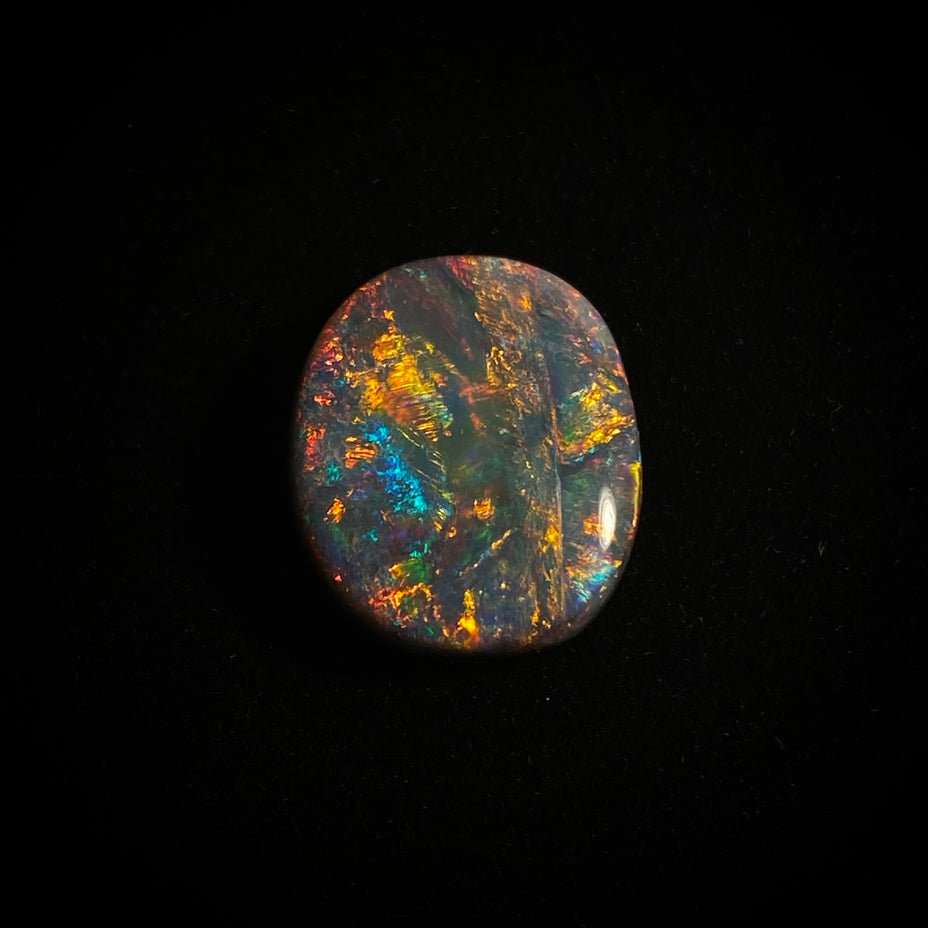
Black opal
Opals from Lightning Ridge are classified by how dark the back of the opal is. Black opal is the rarest and most valuable of all opals. The vast majority of black opals are found in Lightning Ridge, Australia. It has a black background (body tone N1 - N4) of potch (plain opal) with precious opal on top. The darker the black background, the stronger the colors in the opal appear.

Dark opal
Dark opal comes mainly from Lightning Ridge, and has a dark body tone (N5 - N6). It can have the same play of color on top as a black opal, but due to the lighter body tone it is not as valuable as black opal.
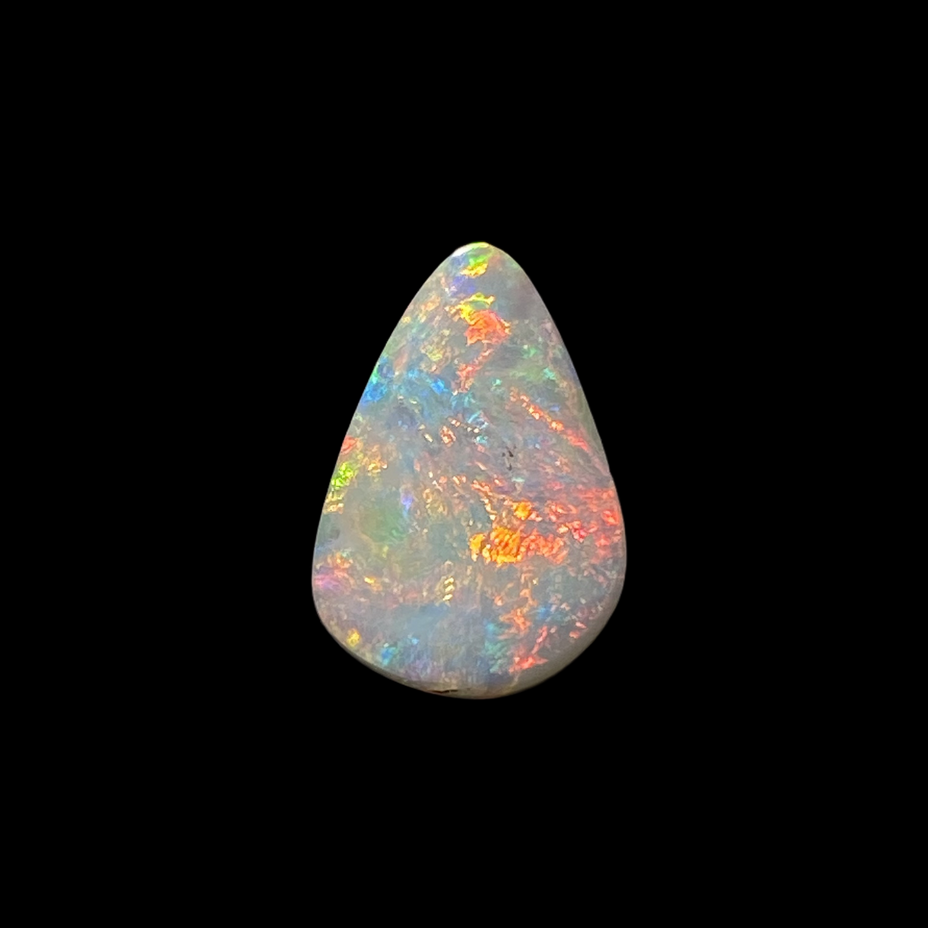
Light opal
Light/white/milky opal is found mainly in South Australia (Coober Pedy and Mintabie are some of the most famous places) and in White Cliff in New South Wales, but they are also found in other areas of Australia. All light opals on our webshop are from our mine in Lightning Ridge.
It has a milky or white body tone (N7 - N9), and is much more common than black opal. It can have the same play of color on top as black opal, but due to the lighter body tone it is not as valuable as black or dark opal.
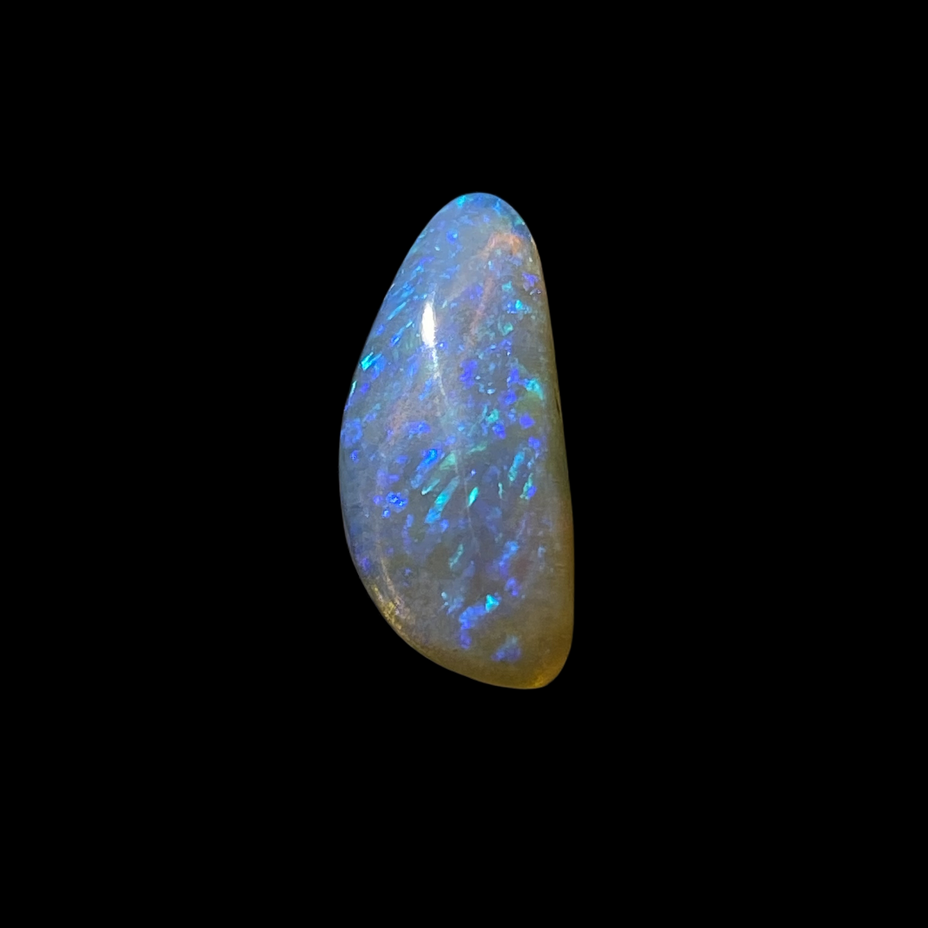
Crystal opal
A crystal opal is an opal with color throughout the opal which gives it a very deep play of color. Crystal opals have minimal or no potch and are often pure color. This means that if you hold it up to the light, you can see through it.
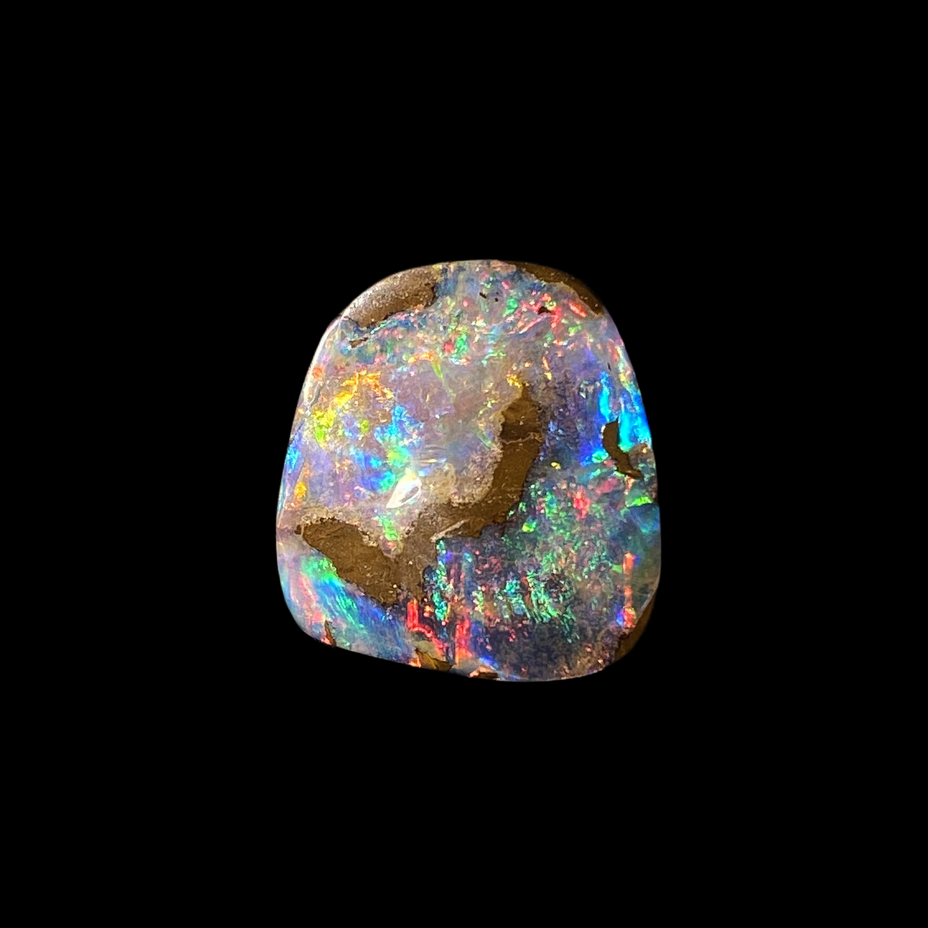
Boulder opal
Boulder opal is found in a large area of Queensland, Australia from Longreach down to Quilpie, Winton and Yowah. It is different from all other Australian opals in that it has an ironstone as its host stone. The colour bar itself is usually so thin that the opal cutter retains some of the ironstone as a background on the opal. Boulder opal gets its name from the way it is mined. It comes up in large blocks of ironstone, called boulders. Other types of opal are Yowah nuts (the opal sits like a core in the middle of a stone) or matrix opals (small lines of opal running through the stone)
